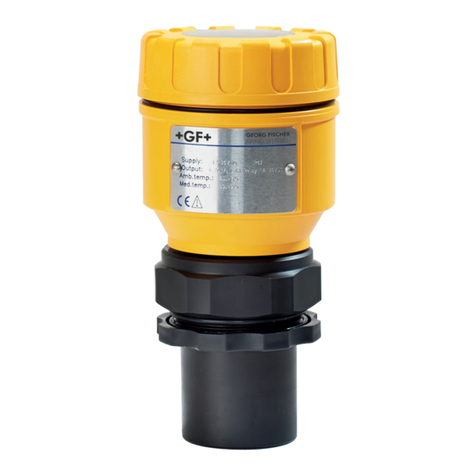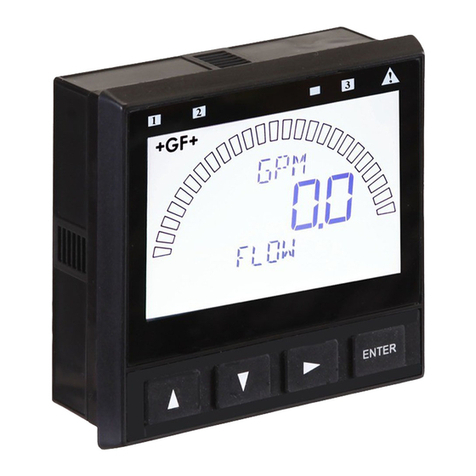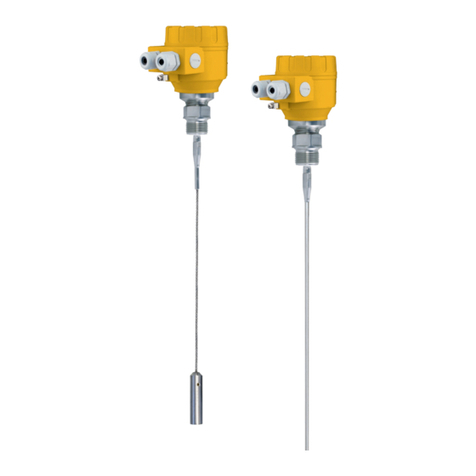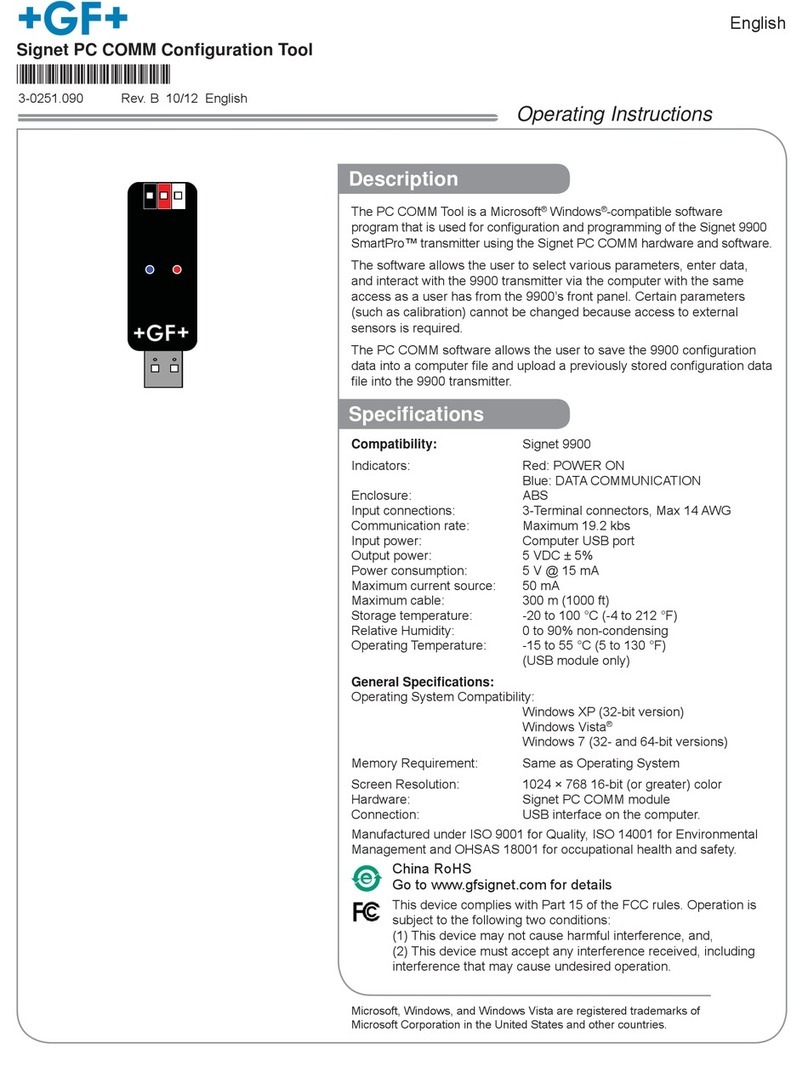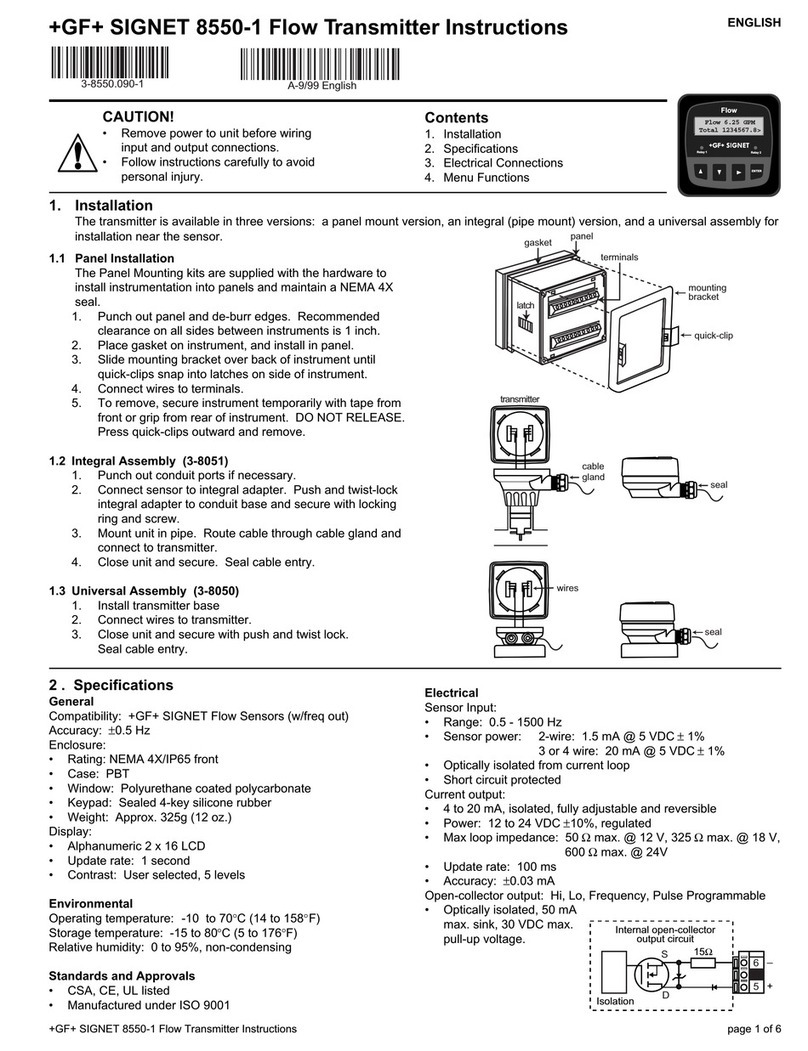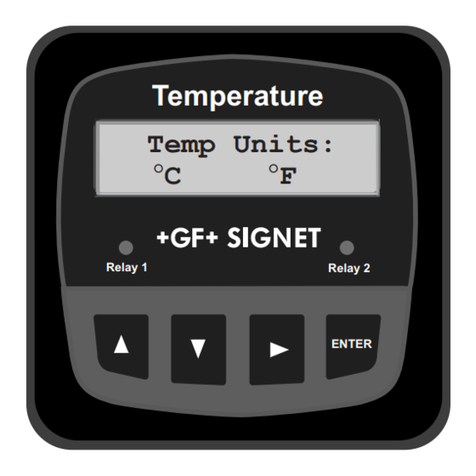
10 9950 Transmitter
Operating Instructions
Thank you for purchasing the Signet line of Georg
Fischer measurement products.
If you would like to register your product(s), you can now
register online in one of the following ways:
• Visit our website www.gfsignet.com.
Under Service and Support click Product
Registration Form
• If this is a pdf manual (digital copy), click here
Refer to your local Georg Fischer Sales office for the
most current warranty statement.
All warranty and non-warranty repairs being returned
must include a fully completed Service Form and
goods must be returned to your local GF Sales office or
distributor.
Product returned without a Service Form may not be
warranty replaced or repaired.
Signet products with limited shelf-life (e.g. pH, ORP,
chlorine electrodes, calibration solutions; e.g. pH buffers,
turbidity standards or other solutions) are warranted out
of box but not warranted against any damage, due to
process or application failures (e.g. high temperature,
chemical poisoning, dry-out) or mishandling (e.g. broken
glass, damaged membrane, freezing and/or extreme
temperatures).
Warranty Information Table of Contents
Product Registration
General Information .........................................................2
Safety Information/Installation..........................................2
Terminal Identification ......................................................3
Wiring ...............................................................................4
Sensor Wiring.............................................................4
Sensor Wiring.............................................................5
Power Wiring..............................................................6
Relay Module Wiring..................................................7
Operation .........................................................................8
Password ...................................................................9
Keypad Operation ......................................................9
Signal Type: 4 to 20 mA...........................................10
Warranty Information................................................10
Product Registration ................................................10
Table of Contents .....................................................10
Dimensions ..............................................................11
Module Installation ................................................... 11
Plug-In Modules .............................................................12
Relay Modules ...............................................................12
Signal Type: Frequency ................................................13
Signal Type: Digital (S3L) ..............................................13
Signal Type: 4 to 20 mA................................................14
Relay Functions .............................................................14
Relay Modes ............................................................15
Derived Functions ....................................................19
Menu System .................................................................20
Common Menu ........................................................21
Loop Menus .............................................................21
Relay Menu ..............................................................22
Option Menu.............................................................24
View Mode ...............................................................26
Sensor-Specific Menus..................................................28
Flow..........................................................................28
pH.............................................................................30
ORP..........................................................................32
Conductivity/Resistivity ............................................34
Pressure...................................................................36
Level/Volume............................................................38
Temperature .............................................................41
4 to 20 mA................................................................42
Salinity......................................................................44
Dissolved Oxygen ....................................................46
Field Software Update ...................................................48
Updating the 9950..........................................................48
Troubleshooting .............................................................49
Appendix ........................................................................51
Averaging .................................................................51
LOG Current Loop Output .......................................51
Custom Measurements............................................52
Calibration Procedures - pH.....................................56
Calibration Procedure - ORP ...................................58
Calibration Procedure - Conductivity/Resistivity......60
Calibration Procedure - Flow ...................................61
Calibration Error Messages .....................................62
USP Limits................................................................63
Maintenance.............................................................63
Map of 9950 Relay and Loop Sources ....................64
Specifications .................................................................65
Ordering Information ......................................................68







